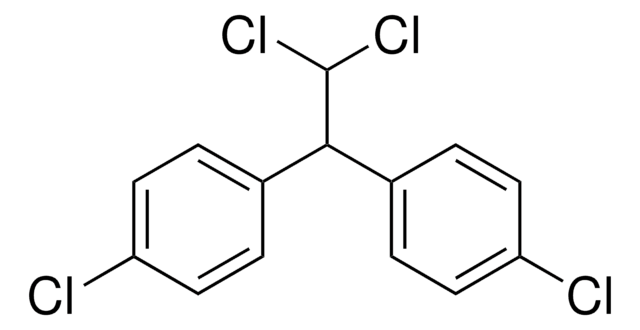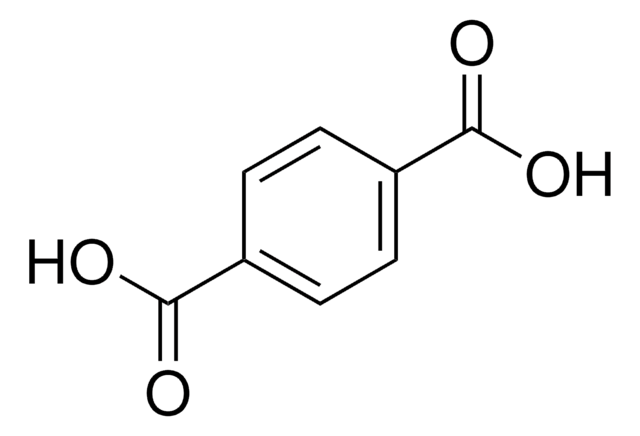Key Documents
123897
1,1-Dichloro-2,2-bis(4-chlorophenyl)ethene
99%
Synonim(y):
4,4′-DDE
About This Item
Polecane produkty
Próba
99%
Postać
solid
mp
88-90 °C (lit.)
rozpuszczalność
ethanol: soluble
grupa funkcyjna
chloro
ciąg SMILES
Clc1ccc(cc1)\C(=C(/Cl)Cl)c2ccc(Cl)cc2
InChI
1S/C14H8Cl4/c15-11-5-1-9(2-6-11)13(14(17)18)10-3-7-12(16)8-4-10/h1-8H
Klucz InChI
UCNVFOCBFJOQAL-UHFFFAOYSA-N
informacje o genach
mouse ... Esr1(13982)
rat ... Ar(24208)
Szukasz podobnych produktów? Odwiedź Przewodnik dotyczący porównywania produktów
Zastosowanie
Hasło ostrzegawcze
Danger
Zwroty wskazujące rodzaj zagrożenia
Zwroty wskazujące środki ostrożności
Klasyfikacja zagrożeń
Acute Tox. 3 Oral - Aquatic Acute 1 - Aquatic Chronic 1 - Carc. 2 - STOT RE 1 Oral
Kod klasy składowania
6.1C - Combustible acute toxic Cat.3 / toxic compounds or compounds which causing chronic effects
Klasa zagrożenia wodnego (WGK)
WGK 3
Temperatura zapłonu (°F)
Not applicable
Temperatura zapłonu (°C)
Not applicable
Środki ochrony indywidualnej
Eyeshields, Gloves, type P3 (EN 143) respirator cartridges
Wybierz jedną z najnowszych wersji:
Masz już ten produkt?
Dokumenty związane z niedawno zakupionymi produktami zostały zamieszczone w Bibliotece dokumentów.
Nasz zespół naukowców ma doświadczenie we wszystkich obszarach badań, w tym w naukach przyrodniczych, materiałoznawstwie, syntezie chemicznej, chromatografii, analityce i wielu innych dziedzinach.
Skontaktuj się z zespołem ds. pomocy technicznej











